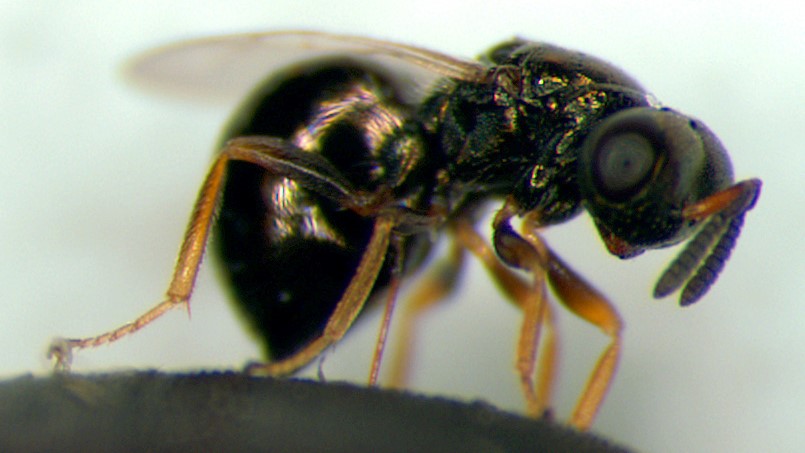Male parasitic wasp can sniff out female mates ready to burst from their hosts
Talk about a dinner date.

Of all the places to find the love of your life, hidden inside the shell of a still-developing fly probably ranks low in most expectations.
However, for a male jewel wasp this is the first place to go, according to new research that shows how males of the species can detect potential mates from inside their host flies, even before they’ve burst out of the host.
Jewel wasps (Nasonia vitripennis) can be found across North America, and they reproduce by injecting their eggs, along with a paralyzing venom, inside the shells of still-developing flies. The wasp eggs take roughly two weeks to mature to adulthood within the fly shell. Broods are all male if the eggs haven’t been fertilized, or a mixture of male and female if some of the eggs have been. Upon maturity, the wasps devour as much as they can of the host fly for a boost of energy before emerging to mate.
Related: Zombie animals: 5 real-life cases of body-snatching
But males exit a few hours earlier than females. So if the males want to mate, they need to wait around. And, as new research shows, males choose to wait where they are more likely to find the most females.
"Our best guess is that they are capable of detecting the scent of adult females inside the hosts," co-author Rhitoban Raychoudhury, an evolutionary geneticist at the Indian Institute of Science Education and Research Mohali (IISER), told Live Science.
To see if waiting males were able to sniff out females, the researchers collected the unfertilized eggs of wild jewel wasps to make a 26-strong, all-male brood. Once the males had reached maturity, the researchers placed each individual into a container before presenting them with two petri dishes — one with a host containing only adult male wasps and the other a host with a mixture of adult males and adult females. The male wasps spent four times longer on the female-harboring host.
Sign up for the Live Science daily newsletter now
Get the world’s most fascinating discoveries delivered straight to your inbox.
But what were they sniffing for? To find out, the researchers analyzed the chemical makeup of both hosts, and they found that the host containing females also had a higher concentration of a special type of hydrocarbon that’s more abundant in adult females than adult males. This hydrocarbon could explain how the males were able to detect the females, the researchers said
Being able to find females before they’ve emerged is a significant reproductive advantage for a male, according to the researchers. They hope to now find out whether this same behavior occurs in other parasitoid wasp species.
“Males of other species (such as Pimpla disparis) have been known to spend more time on parasitized hosts than non-parasitized ones,” Raychoudhury said. “However, unlike our study, it is not known whether they can distinguish between those that have females from those containing males.”
The researchers published their findings April 27 on the preprint server bioRxiv, and so the study has yet to be peer-reviewed.
Originally published on Live Science.

Ben Turner is a U.K. based staff writer at Live Science. He covers physics and astronomy, among other topics like tech and climate change. He graduated from University College London with a degree in particle physics before training as a journalist. When he's not writing, Ben enjoys reading literature, playing the guitar and embarrassing himself with chess.









